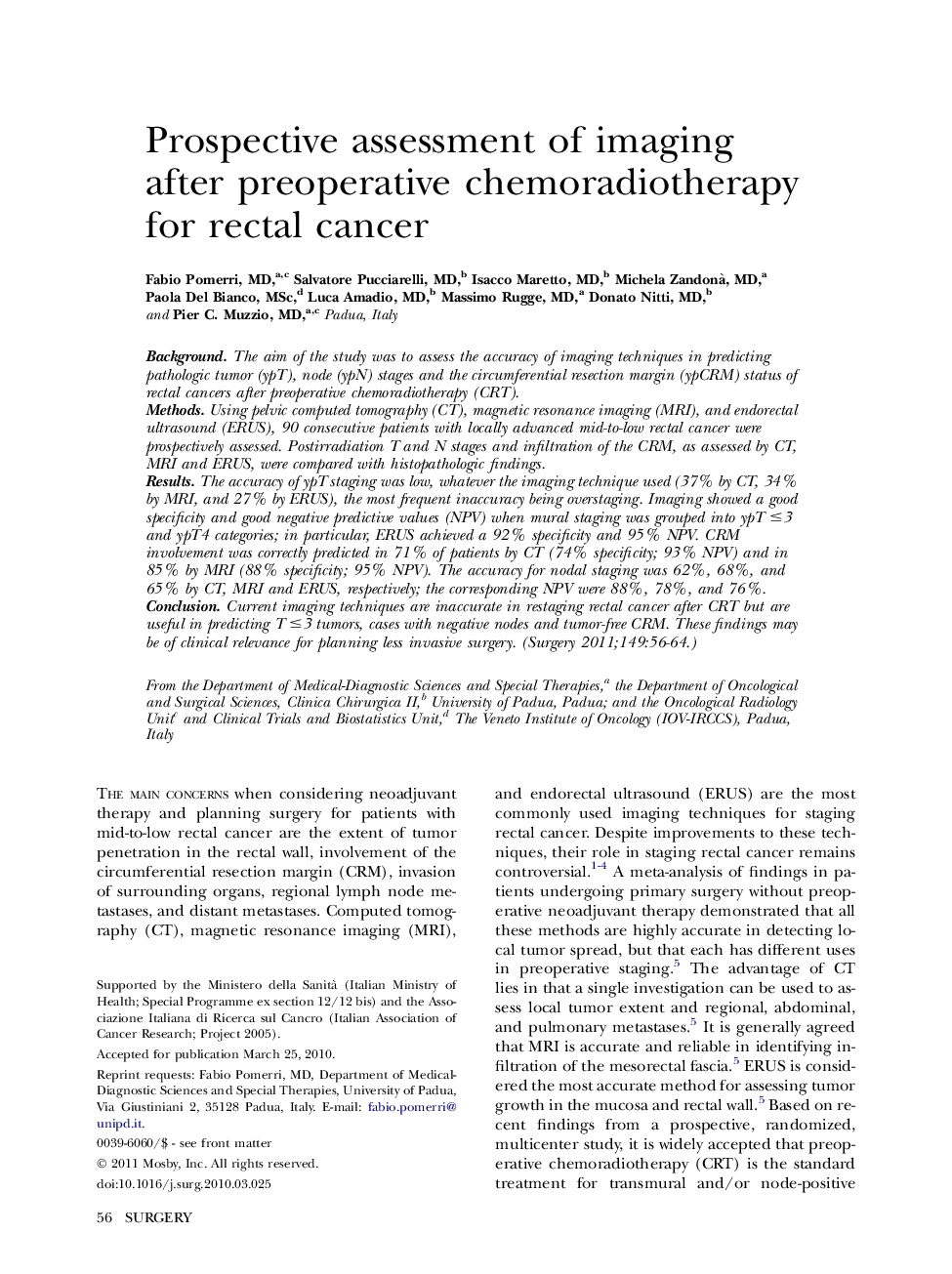| Article ID | Journal | Published Year | Pages | File Type |
|---|---|---|---|---|
| 4309009 | Surgery | 2011 | 9 Pages |
BackgroundThe aim of the study was to assess the accuracy of imaging techniques in predicting pathologic tumor (ypT), node (ypN) stages and the circumferential resection margin (ypCRM) status of rectal cancers after preoperative chemoradiotherapy (CRT).MethodsUsing pelvic computed tomography (CT), magnetic resonance imaging (MRI), and endorectal ultrasound (ERUS), 90 consecutive patients with locally advanced mid-to-low rectal cancer were prospectively assessed. Postirradiation T and N stages and infiltration of the CRM, as assessed by CT, MRI and ERUS, were compared with histopathologic findings.ResultsThe accuracy of ypT staging was low, whatever the imaging technique used (37% by CT, 34% by MRI, and 27% by ERUS), the most frequent inaccuracy being overstaging. Imaging showed a good specificity and good negative predictive values (NPV) when mural staging was grouped into ypT ≤3 and ypT4 categories; in particular, ERUS achieved a 92% specificity and 95% NPV. CRM involvement was correctly predicted in 71% of patients by CT (74% specificity; 93% NPV) and in 85% by MRI (88% specificity; 95% NPV). The accuracy for nodal staging was 62%, 68%, and 65% by CT, MRI and ERUS, respectively; the corresponding NPV were 88%, 78%, and 76%.ConclusionCurrent imaging techniques are inaccurate in restaging rectal cancer after CRT but are useful in predicting T ≤3 tumors, cases with negative nodes and tumor-free CRM. These findings may be of clinical relevance for planning less invasive surgery.
